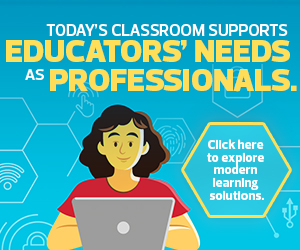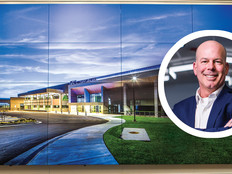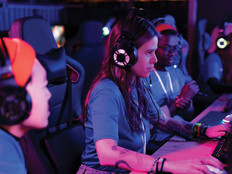“Lag” is a term frequently used by video game players. In video games, some lag can be resolved with the right graphics cards. When lag troubles K–12 teachers using wireless casting to show videos, however, the solution isn’t always so simple.
Using educational video in the classroom can have many benefits, including improved cognitive thinking skills for students, according to ViewSonic. However, showing video without wireless casting can increase the time it takes a teacher to pull up and start a video. On top of that, educators may find themselves tethered to their desks or workstations.
UP NEXT: Equip K–12 teachers for a flexible future with these classroom devices.
Wireless casting allows educators to enhance instruction with video while maintaining their mobility in the classroom. Unfortunately, lag discourages many educators from using wireless casting in the classroom. Here are some tips to improve the streaming quality of wireless casting and reduce lag in K–12 instruction.
Update Classroom Hardware and Software for Wireless Casting
One roadblock that may be causing video lag for educators is outdated hardware and software. First, ensure all the components and devices you’re using support wireless casting. The wireless casting hardware should also be suitable for the size of the classroom.
Support Instructional Video with a Wired Internet Connection
Frequently, the biggest perpetrator of lag in wireless casting is Wi-Fi that can’t support the stream.
“Your casting experience is only as good as the Wi-Fi within the classroom,” says Mike Volpe, IOGEAR’s director of marketing. “Distance from the display, poor Wi-Fi throughput in the classroom, wall and ceiling materials interrupting the signal, interference from other wireless sources, and jamming systems all play a role in limiting the quality of the experience on Wi-Fi-based casting systems.”
One tactic for educators is to use a wired internet connection. An ethernet cable may provide better connectivity and ultimately improve the playback speed of the instructional video or other robust media.
IT Admins Should Choose Systems That Don’t Rely on Wi-Fi
School districts can also choose wireless casting systems that don’t rely on Wi-Fi. Instead, they can choose devices that create their own Wi-Fi network or mix one-to-one casting with Wi-Fi casting.
The Mini Wireless 4K Screen Sharing adapter works via the first method, Volpe explains. “The mini Wi-Fi network connection means the device creates a mini Wi-Fi network for teachers or students to cast to. This method doesn’t connect the casting device to a router,” he says. “This is a great fail-safe too, as it means that students would have to connect to its Wi-Fi casting network, disconnecting them from the internet and preventing them from sharing any disruptive internet-based content to the device.”
READ MORE: Technology's quality affects online learning for K–12 students.
The one-to-one method, meanwhile, uses a transmitter and receiver system. The presenter casts a video or other media to the classroom display “in full resolution, with perfect synchronization, no lag and no choppiness,” Volpe says.
“While Wi-Fi casting makes it really easy to empower students and teachers to share their screens on the classroom display, a system with a proprietary transmitter and receiver will deliver a perfect experience, free of any complaints,” he adds.











